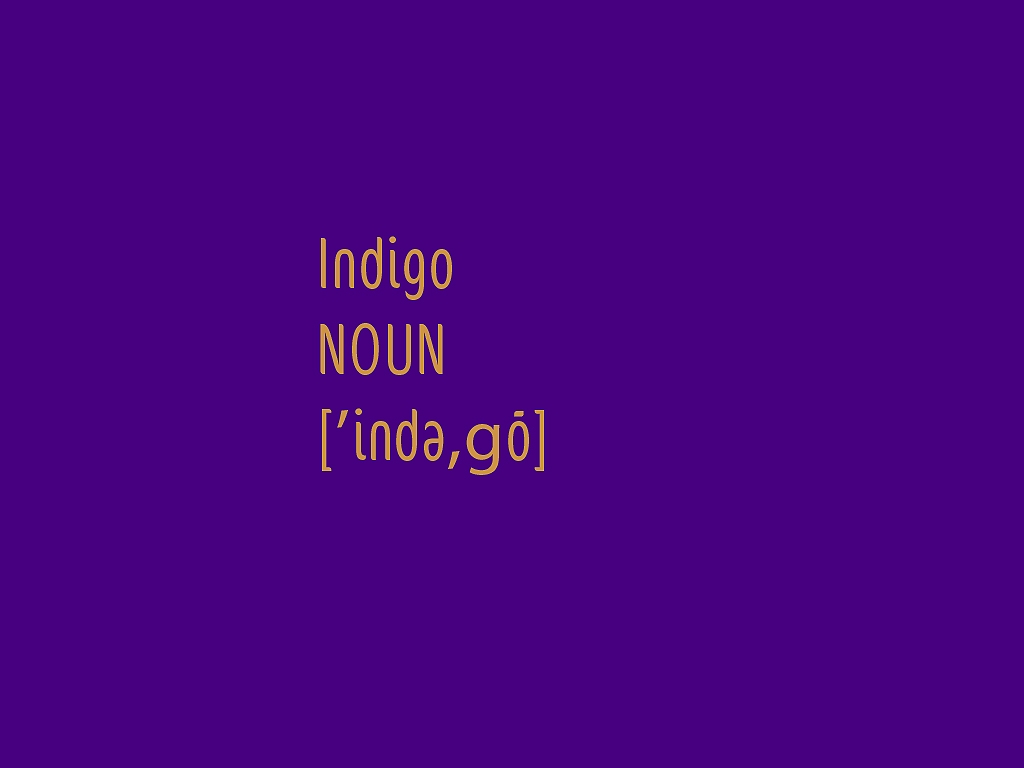
A member of the Apocynaceae family Wrightia tinctoria was known as dyer’s oleander and Manila indigo. Farmers grew Marsdenia in areas that were too wet for Indigofera. Although he hoped to spread the plant throughout the British Empire, it was widely grown only in Southeast Asia, Myanmar, and the Himalayas. A member of the Asclepiadaceae family, the vine Marsdenia tinctoria honors British plant collector William Marsden, who identified the species in Sumatra. Farmers propagated Strobilanthes from cuttings and harvested the plant before it seeded.įarmers in West Africa cultivated Lonchorarpus cyanescens, known as Yoruba indigo. In the 19th century, Indians cultivated both Strobilanthes and Indigofera. People in remote areas grew Strobilanthes, leading one to suppose that it seldom entered the market. Despite this appellation, its culture in India appears to have constituted only a small part of its range, which included southwestern China, Thailand, Myanmar, Bhutan, Laos, Vietnam, Bangladesh, Malaysia, Taiwan, Japan, and Okinawa.
#Indigo meaning india free
In the 18th century, Europeans grew the species, but only in areas free from frost.Ī perennial shrub in the Acanthaceae family, Strobilanthes flaccidifolias, which yields dark shades of blue, was known as Assam indigo. The chief indigo of Japan, Polygonum tinctorium, was also cultivated in Korea and Vietnam. After the fifth century, Polygonum diffused from southern China to Japan, where it was known as Ai. A subtropical plant, Polygonum was cultivated with Indigofera and in regions too cold for the latter.

The Chinese knew Polygonum tinctorium as liao-len. Known as dyer’s knot wood, Japanese indigo, and Chinese indigo, the plant may be indigenous to China, where it is still grown, though on a tiny scale. Grown in Tibet and Afghanistan, the species of Isatis were the basis of medieval Europe’s indigo industry.Īn annual or biennial, Polygonum tinctorium is a member of the Polygonaceae family. The British knew this species of indigo as tea indigo or cabbage blue, the latter name doubtless a reference to the plant’s relationship to cabbage and to the color of its dye. Since the 16th century, the Chinese cultivated the related species Isatis indigotica, which they called sung lan or tien-ching. At the height of woad’s popularity, Turkey cultivated more than 36 species. The Columbian Exchange spread it to North America. Its range extended as far north as Scandinavia, though it was also grown in the Azores Islands. Native to the Mediterranean Basin and western Asia, Isatis tinctoria spread to Britain by the Iron Age. A biennial in the Cruciferas family, the species, whose leaves resemble those of spinach, is related to cabbage, mustard, and rape. Whereas the species of Indigofera were confined to regions that did not experience frost, Isatis tinctoria, known as woad or pastel in French, was a temperate plant. After 1500, Europeans introduced Indigofera tinctoria to the Americas.

Native to North America, Indigofera coroliniana was the basis of the Southern plantations. The American species of indigo may have originated in Mexico, spreading to Central and South America in both pre-Columbian and postconquest periods. The Dutch cultivated it in Southeast Asia. Farmers grew the former in North America. The species Indigofera suffruticosa and Indigofera micheliana are native to the Americas. The Muslims grew several species of Indigofera in Malta, Sicily, Cyprus, and Spain. These species fared better in dry climates than Indigofera tinctoria. The people of northwestern India and West Africa cultivated Indigofera articulate and Indigofera coerulea. Other centers of cultivation were Vietnam, Laos, the Philippines, and the Near East. By then farmers grew Indigofera throughout Indonesia: Sumatra, Sumba, and Flores in addition to Java. Curiously, from the 19th century Indians knew Indigofera as Java indigo, suggesting a reintroduction from the island to India. From Africa the species of Indigofera, including Indigofera tinctoria, migrated to Java in the 19th century, where they were known as netal indigo. Two other species used for dye, Indigofera arresta and Indigofera articiolate, are native to Africa. Its origin in India, the species spread from the subcontinent east to Southeast Asia and west to the Middle East, Madagascar, Africa, and, with the Columbian Exchange, the Americas. Grown from sea level to 3,000 feet, Indigofera tinctoria, the most common species in the genus, is a perennial shrub. With 800 species, Indigofera numbers more than 600 species in Africa, roughly 200 in Asia, 80 in the Americas, and 50 to 60 in Australia.

A genus of the tropics, Indigofera has similar cultural requirements as sugarcane and cotton and was cultivated with these crops. Because of its beneficial effect, Indigofera was grown in rotation with other crops. Indigo flowers (iStockPhoto) that fix nitrogen in the soil.


 0 kommentar(er)
0 kommentar(er)
